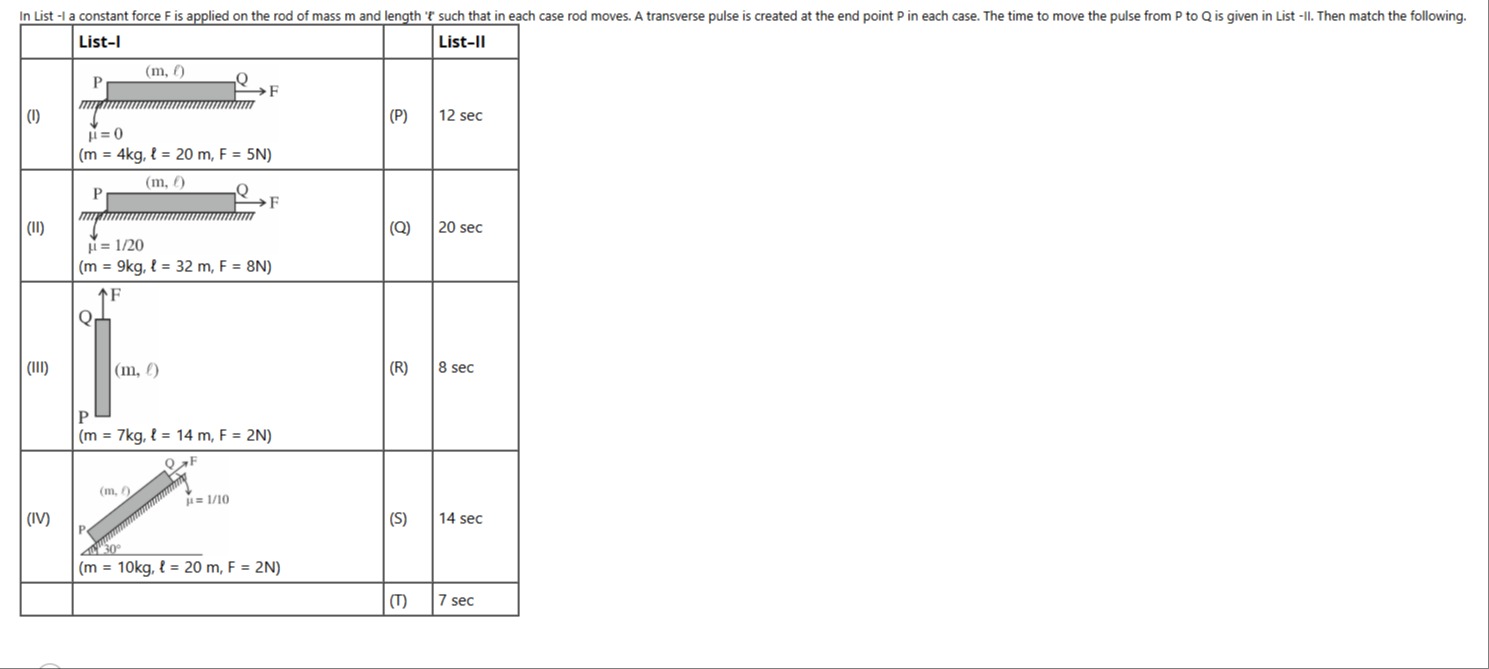Question
Question: In List -I a constant force F is applied on the rod of mass m and length 'l' such that in each case ...
In List -I a constant force F is applied on the rod of mass m and length 'l' such that in each case rod moves. A transverse pulse is created at the end point P in each case. The time to move the pulse from P to Q is given in List -II. Then match the following.

(m, l)P→Fμ = 0(m = 4kg, l = 20 m, F = 5N)
(m, l)P→Fμ = 1/20(m = 9kg, l = 32 m, F = 8N)
↑FQ(m, l)P(m = 7kg, l = 14 m, F = 2N)
F(m, l)μα 1/10P(m = 10kg, l = 20 m, F = 2N)
(I)-(R), (II)-(P), (III)-(S), (IV)-(Q)
Solution
The time taken for a transverse pulse to travel along a rod under varying tension T(x) is given by:
t=∫0lv(x)dx=∫0lT(x)μdx=lm∫0lT(x)dx
We calculate the tension T(x) at a distance x from the starting point P of the pulse by applying Newton's second law to the segment of the rod from P to x. The forces on this segment in the direction of motion are the tension T(x) at its end, and other external/internal forces like weight and friction. The net force equals the mass of the segment times the acceleration of the rod.
In all four cases, the tension distribution is found to be linear with distance from P, T(x)=kx, where k is a constant.
For cases I, II, III, and IV, we derived T(x)=lFeffx, where Feff is the effective force responsible for creating tension along the rod.
- Case I: Horizontal, frictionless. T(x)=lFx. t=2Fml. t=254×20=8 s.
- Case II: Horizontal, friction. T(x)=lFx. t=2Fml. t=289×32=12 s.
- Case III: Vertical. T(x)=lFx. t=2Fml. t=227×14=14 s.
- Case IV: Inclined, horizontal force. T(x)=lFcosθx. t=2Fcosθml. t=22cos30∘10×20=23200. Approximating 3≈2, t≈22200=20 s.
Matches: (I)-(R), (II)-(P), (III)-(S), (IV)-(Q).
Therefore, the final answer is (I)−(R),(II)−(P),(III)−(S),(IV)−(Q).
